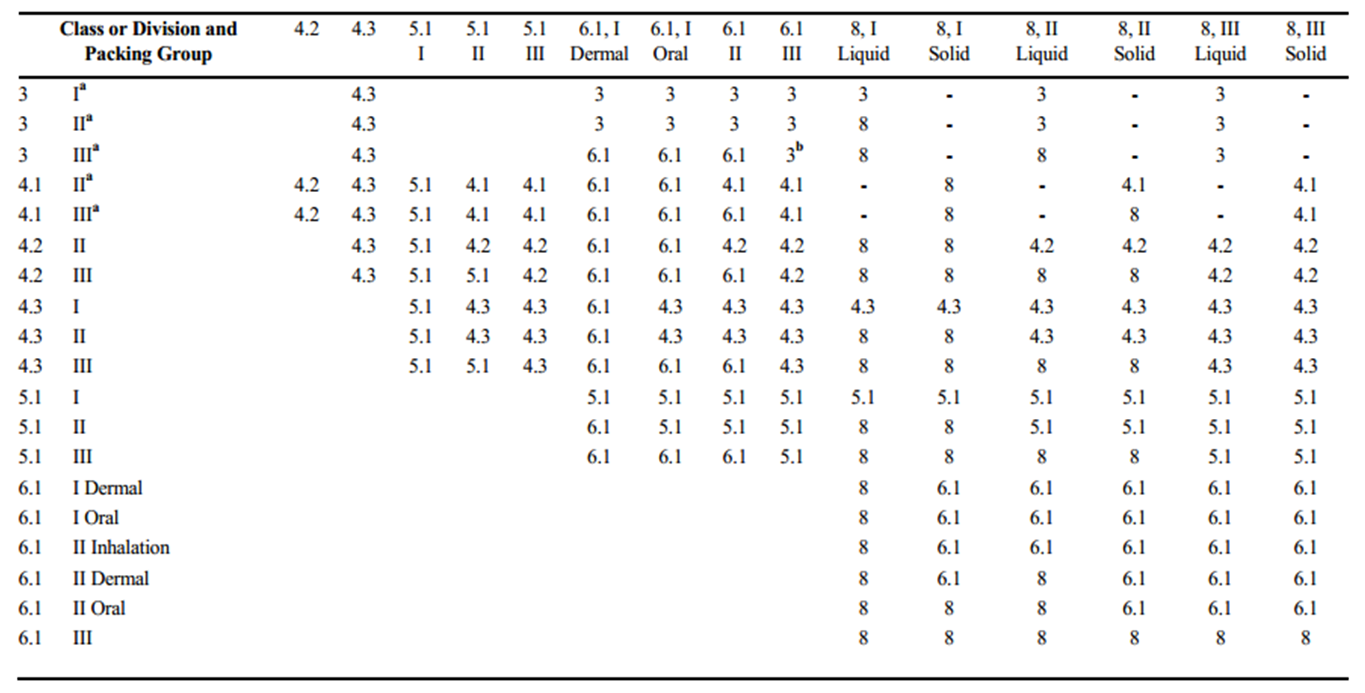Dangerous Goods Classes and Symbols
Little Pro on 2016-01-07
There are 9 dangerous goods classes. Substances (including substances and mixtures), and articles are assigned to one of the following 9 classes according to the most predominant hazards they pose in transport. Some of the classes can be further divided into divisions, e.g., Class 1, while others do not have sub-divisions, e.g., Class 3.
- Class 1 Explosives
- Class 2 Gases
- Class 3 Flammable Liquids
- Class 4 Flammable solids; substances liable to spontaneous combustion; substances which, in contact with water, emit flammable gases
- Class 5 Oxidizing substances and organic peroxides
- Class 6 Toxic and Infectious substances
- Class 7 Radioactive material
- Class 8 Corrosive substances
- Class 9 Miscellaneous dangerous substances and articles, including environmentally hazardous substances
The picture below shows hazard symbols for Class 4 dangerous goods. You can download all hazard symbols for all hazard classes above by clicking the picture below.
Primary Hazard Class and Subsidiary Class for Dangerous Goods
Some dangerous goods have multiple hazards. The primary class is the class of dangerous goods that takes precedence over any other class. The subsidiary class is the other class that further identifies the hazards of the dangerous goods. More than one subsidiary class is possible. For most of dangerous goods, the primary class and subsidary class can be found in Dangerous Goods List.
For goods having multiple risks which are not specifically mentioned by name in Dangerous Goods List, you have to follow the following hazard precedence rules to determine their primary hazard class and subsidiary class.
| Rule | How It Works |
|---|---|
| Packing Group Rule |
The following packing group always takes precedence irrespective of hazards:
|
| Dominant Hazard Rule |
The following hazard class always takes precedence irrespective of packing groups:
|
| Hazard Precedence Table |
If above two rules do not apply, please refer to the following hazard precedence table to choose primary hazard. |

References
http://www.unece.org/fileadmin/DAM/trans/danger/publi/unrec/rev16/English/02E_Part2.pdf
Having Questions?
We do not provide consultancy services. If you have questions or need any help, please contact our sponsor. You may also find an expert in CSP business directory below. If you are a consultant, you may get yourself listed in CSP business directory (free) or sponsor this page to leave your contact info on this page..

Tags: Topics - TDG, Dangerous Goods
